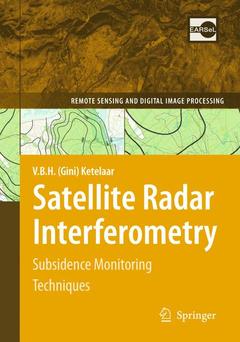Description
Satellite Radar Interferometry, Softcover reprint of hardcover 1st ed. 2009
Subsidence Monitoring Techniques
Remote Sensing and Digital Image Processing Series, Vol. 14
Author: Ketelaar V. B. H. (Gini)
Language: English
Subjects for Satellite Radar Interferometry:
Approximative price 158.24 €
In Print (Delivery period: 15 days).
Add to cartPublication date: 10-2010
244 p. · 15.5x23.5 cm · Paperback
Approximative price 158.24 €
Subject to availability at the publisher.
Add to cartPublication date: 03-2009
244 p. · 15.5x23.5 cm · Hardback
Description
/li>Contents
/li>Comment
/li>
Unique combination of scientific research and the operational use for deformation monitoring
Precision and reliability assessment of InSAR as a measurement technique, including the newly developed multi-track datum connection procedure
Demonstrates the applicability of PSI for deformation monitoring using a general theoretical framework in unfavourable circumstances (rural areas, small displacement rates (up to ~7 mm/year), over a large spatial extent (~15.000 km2)
The extra potential of PSI for monitoring reservoir behavior is investigated: subsidence and uplift, estimation of horizontal deformation by combining multiple tracks
Includes supplementary material: sn.pub/extras




